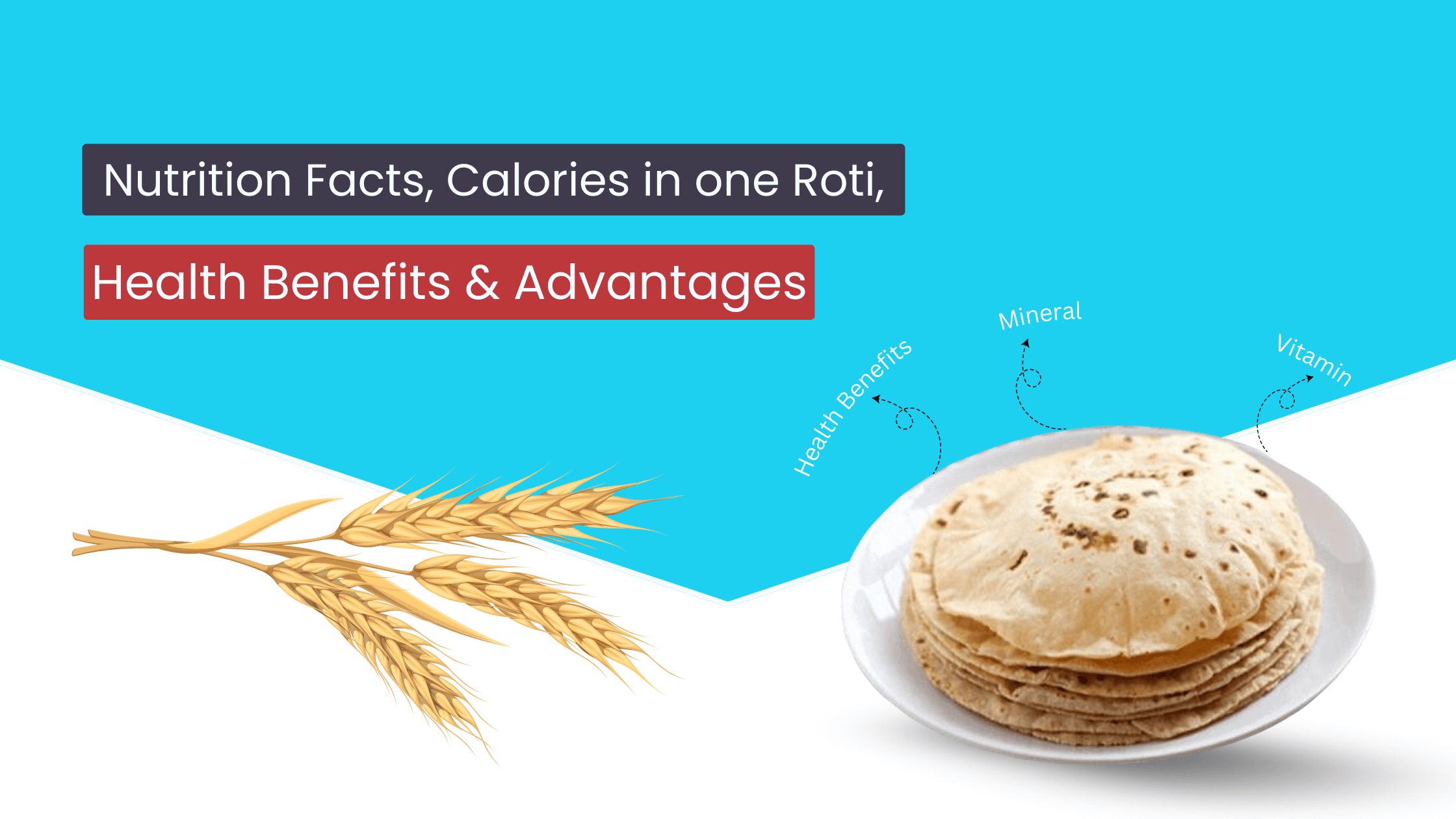Roti: Nutrition Facts, Calories in one Roti, Health Benefits & advantages
Roti: Nutrition Facts, Calories in one Roti, Health Benefits & advantages
In most Indian homes, roti has generally been referred to as chapati. The preparation of this is majorly dependent on whole wheat flour. Hence it is very healthy and can be used in many ways in different recipes. But apart from being the base of most dishes, roti is important when it comes to the realistic benefits of being nutritional enough to make roti the pure 'foundation' of a healthy, balanced diet. This blog will entrench you into nutritional facts and calories of one chapati, not forgetting the health benefits involved in including this simple yet wholesome diet in your daily meals.
These are components of roti making it a real powerhouse of nutrition.
All this is because the sole star in the Chapati nutrition data is whole wheat flour. A medium roti made of around 40 grams of content would contain approximately 70-80 calories, assuming fat is not added to it, either ghee or butter, during preparation. Composition: Macro contains 18-20 grams of carbs, 3-4 grams of protein, 2 grams of dietary fiber, and less than 1 gram of fat. So, roti is well balanced for a part of a diet.
Want to know how your diet impacts your health? Book a consultation with our experts to get a personalized nutrition plan!
How many calories are in a piece of roti?
The calorie count of one roti will depend on the size and method of preparation. With medium-sized roti made with whole wheat flour and no oil, the average calories are approximately 70-80. Adding a little ghee or butter makes it go as high as 120 or more. This makes the roti relatively low-calorie, especially when compared to other sources of carbohydrates, like rice or bread; hence it has found such wide use with those who are conscious about weight or who always want to know How many calories in 1 roti.
Health Benefits of Roti
Roti is not only part of the dietary staples but also contains several health benefits that contribute to well-being. Here's why putting chapati in your diet is a smart choice:
- Good source of energy: Roti is a product made of carbohydrates as an energy source. So that in its case, your body keeps getting sustained fuel throughout the day.
- Improves Digestive Health: Roti is full of dietary fiber that prevents the condition of constipation and ensures good bowel movements. Whole wheat roti, in this respect, is very useful for the digestive system of our body.
- Assists in Weight Loss: Since it contains a minimal number of calories and lots of fiber, chapati is effective in regulating hunger and preventing weight gain. It is because the fiber prolongs digestion time, leaving one satisfied for longer hours.
- Promotes Muscle Building: Roti is a good source of protein to repair and build muscles. Adding it up with protein-rich dishes will make it even better than lentils or paneer.
- Regulates Blood Glucose Level: Unlike processed carbohydrates, the glycemic index of whole wheat roti is very low. The glucose in it is gradually released into the bloodstream. It can be a very good choice for diabetic patients.
- Improves heart health: Chapati contains very little fat and no cholesterol at all. Additionally, the content of fiber in whole wheat flour diminishes the level of bad cholesterol, thus making the heart healthy.
Know the calories of chapati in the following versions
One roti calorie depends on preparation. The medium-sized plain roti is prepared without using oil content of 70-80 calories. If it is made using ghee or butter, then the Calories for chapati count hit approximately 100-120 calories. Chapatis can contain up to 150-200 calories when stuffed with potatoes and paneer. All work in intelligent food choices. A caloric restriction might like chapatis as is, whereas someone needs a little more energy to love them stuffed or topped with ghee.
Curious how chapati fits into your specific diet goals? Get a customized diet plan from certified professionals—Schedule your health check-up today!
Improvement in Nutritional Quality in Roti
Small variations in preparation make roti even more nutritious. The use of multigrain flour instead of regular whole wheat flour makes a big difference in its nutrient profile. Flaxseed or chia seeds can be added for fiber and omega-3; greens like spinach or fenugreek leaves can add vitamins and minerals. Nutritional value Chapati can be prepared together with nutritional value by adding nutritional side dishes. It includes the addition of lentils or vegetables that increase the flavor of roti and provide nutritionally balanced food with proteins, vitamins, and probiotics.
Roti: The Daily Superfood for Everyone
Knowing the nutritional benefits of roti and its calorie content empowers you to make informed choices about your meals. The knowledge that one chapati contains several calories and has a nutrient composition gives an idea about how versatile this low-calorie, high-fiber food is in supporting your overall health. With chapati as part of your diet, and experimenting with multigrain or stuffed ones, you can enjoy the benefits while keeping a healthy lifestyle. With universal appeal and nutritional richness, roti stands out as one of the most timeless superfoods, bridging tradition and health effortlessly.
Your Health Starts with Simple Choices—Like Roti!
At Doctor’s Diagnostic Centre, we’re committed to helping you make better health decisions. Whether you’re tracking your calories, managing diabetes, or simply aiming for a balanced lifestyle, our nutrition and diagnostic services are designed to support you every step of the way.
Ready to take charge of your health?
Book an appointment today or
Call us directly for expert advice!
